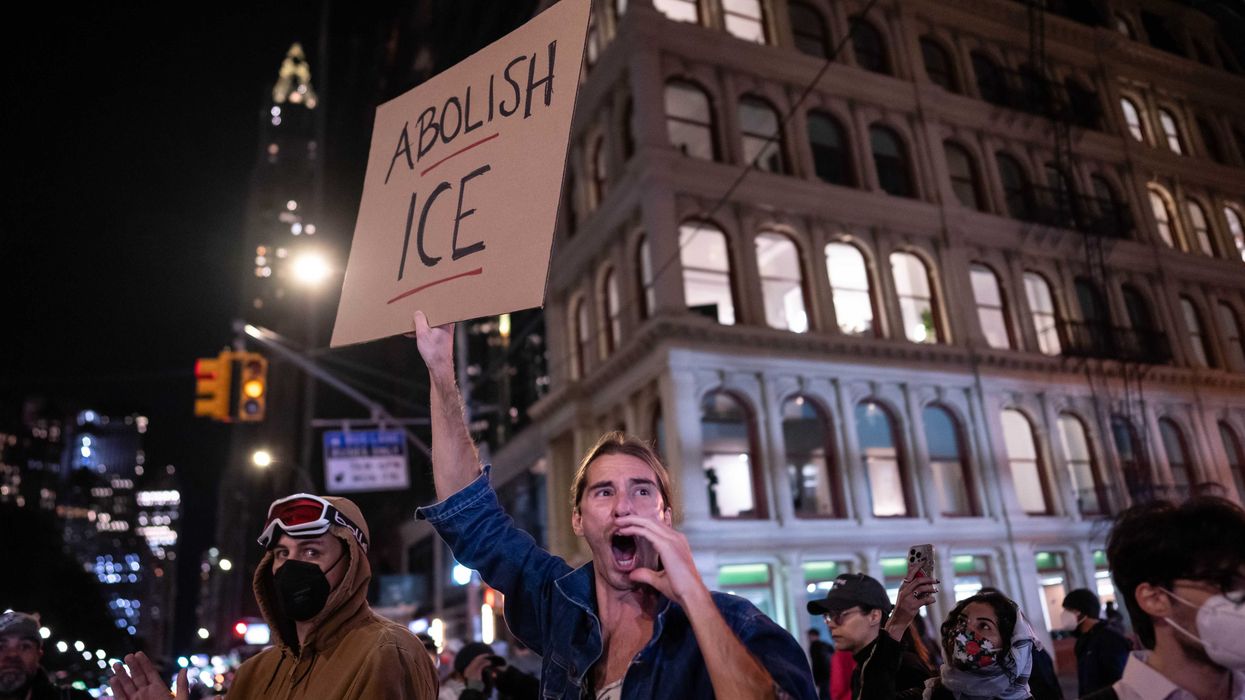Former Planned Parenthood director Abby Johnson joined Glenn on radio Tuesday to relate some of the horrors she experienced while working for the now highly scrutinized organization.
At first, she said she became numb to everything she was doing, but then something happened that woke her up and changed her life.
Listen or read the transcript below.
Below is a rush transcript of this segment, it might contain errors.
GLENN: Now, I read a story about a woman named Abby Johnson. This is a remarkable, remarkable woman. She is a woman who went to work for Planned Parenthood, and she was named the employee of the year in 2008. She left in 2009 because of the things that she saw from the first day and then she grew numb to it and then she had an awakening. She joins us now. Welcome to the program, Abby Johnson.
ABBY: Thank you so much for having me on.
GLENN: I'm thrilled to meet you. I've read your story and I've read what you have said and what you have seen. And I find it remarkable. Could you just take us through some of the things -- I'd like you talk about the refrigerator and the -- and the security codes and everything else that just show how dark and demonic this is.
ABBY: Sure. Well, I worked at Planned Parenthood for eight years. I was their clinic director in Bryan/College Station, Texas. And, you know, I got -- I got into Planned Parenthood because I was basically told the talking points. I was told that they were there to help women, that we were there to help, you know, poor women get health care, and that abortion was just a really small part of what we did.
And, you know, honestly, it was what I didn't know about Planned Parenthood, that's what really got me into trouble. You know, I was raised pro-life. But, you know, we weren't activists of any sort. We didn't sit around the dinner table and talk about Planned Parenthood or what they did or anything like that.
And so once I started working there, I mean, that was really when the numbing began. You know, I remember being told after, you know, working there for a while that our alarm code was 2229 because that spelled "baby." And everybody in the office thought that was just so funny and so ironic.
And I remember in August of 2009, the year I left, we had a meeting -- a budget meeting with my -- with my supervisor, and I remember looking at the budget and thinking, "You know, something has to be wrong," because they were beginning to impose an abortion clinic quota, a certain number of abortions that we had to perform in order to meet our budget and in order to receive financial incentives, in order to receive bonuses. And that number had doubled from 2009 to 2010.
And that didn't make sense to me because, you know, I believed -- I told the media, I told my family, I told my friends that our goal at Planned Parenthood was to reduce the number of abortions. So, you know, if that were true, why in the world were we doubling our abortion clinic quota? And I remember saying something to my boss about it, and she just started laughing. And she said, "Well, we wouldn't want to reduce the number of abortions, Abby. This is how we make our money."
And, you know, at the time I didn't know if it was that the organization was changing or if it was that I was just finally high enough up in management now that I was seeing what the organization had been about all along. And that was profit, that was money.
And then ultimately, in September of 2009, I witnessed a live ultrasound-guided abortion procedure. And that's different than how we usually performed abortions inside of Planned Parenthood.
Planned Parenthood Federation of America, their standard is that abortions are performed in a blind manner. And so the abortionist will take a suction instrument and will just blindly poke around inside the woman's uterus until he thinks he has enough blood and tissue in a glass jar. That glass jar goes through a pass-through in the wall to a lab called the POC lab. Now, POC stands for "products of conception." That's obviously the baby, but you can't say "baby" inside of an abortion clinic. so we said "POC" or "pock," or if the staff was feeling funny, we said that it stood for "pieces of children."
And someone inside of the lab, called the POC technician, would reassemble the parts of the baby to ensure that everything was accounted for, to make sure that we didn't leave a head or a hand or a leg inside the woman's uterus. And then it would either go to a research company that was paying for us the baby's body parts. Or it would go into a -- into a freezer that we called the "nursery." And there it would wait until a group like Stericycle, a medical waste company would come and pick it up.
And that was just the way that I knew abortions to be performed day in and day out. There's about 3500 abortions performed every day in the United States. And so this doctor though that came from out of town, he was explaining that in his facility, he actually uses an ultrasound because, surprisingly enough, it's safer if a doctor can see what he's doing while he's performing surgery on a woman.
And my job during the abortion was to hold the ultrasound probe on the woman's abdomen. We did the dating, and we found that the baby was 13 weeks gestation. And I could see on the screen that it looked like a baby. It had all the parts of a baby. And I watched really just in horror as the baby began to recoil and move away from the abortion instruments. And the baby was fighting and struggling for its life.
And the doctor asked the technician to turn on the suction machine. And he said, "Beam me up, Scottie." And the machine was turned on. And, you know, I remember watching just part of this baby being suctioned into that -- that cannula, that suction tube.
And the very last thing I saw on the screen -- you know, x-ray on ultrasound, anything that's hard, anything that's dense tissue like a bone shows up as white, bright white, on the screen. And the last thing I saw was this little tiny backbone floating around in the woman's uterus, and finally I thought, "Go into the suction tube."
And, you know, I left the room that day just feeling sick, just feeling the numbness removed from my body. And I suddenly realized that this was a child in the womb. That there was humanity there. If there was humanity, that meant there was a human being. And if there was a human being, that meant that that child had human rights and should be given the rights of any -- any of us human beings.
And I knew that if there were human rights, then that child had infinite dignity and infinite worth and that I had to start standing up against abortion, against Planned Parenthood, against other abortion providers that were manipulating and coercing women into having abortion procedures. And so that's essentially what I do now.
GLENN: Abby, for you to do this, first of all, you're an amazing woman of courage. Because for you to do this, it requires you to damn yourself for the things that you were a part of, the things that you turned a blind eye to, and then you've had two abortions yourself.
ABBY: Uh-huh. Yeah, I have.
I -- you know, one of the -- you know, it's really crass to say. But one of the perks of working inside the abortion industry is that you can get free abortions if you find yourself pregnant. And I've had two abortions myself. One surgical abortion and 1RU46 abortion. And actually then got married and got pregnant with my daughter Grace.
And I remember being in the clinic and it was -- it was like a joke with my coworkers. You know, "Oh, Abby is pregnant." You know, I had nausea, typical morning sickness when I was pregnant with Grace. And, you know, every day, you know, if I would get sick at work, they would say, "Oh, you know, we can take care of that." And, you know, just sort of the callousness, you know, about the unborn, and even babies that are wanted. I mean, my baby was wanted. But it was just a big, sick joke in the clinic, you know. And I remember thinking -- when I got past 24 weeks, I thought, "Oh, I'm so glad I'm past 24 weeks because now it's too late for me to have an abortion, and now they'll stop making jokes about it."
GLENN: Did they?
ABBY: They did, for the most part. I mean, at that time, you know -- I mean, there's still -- you know, Dr. Warren Hern, in Boulder, Colorado, he will abort babies up until the date of birth. So, you know, every once in a while they would make a comment like, you know, "Oh, well, you know, it's not too late for Dr. Hern." But, you know, generally the comments sort of died down. And then eventually they had a baby shower for me inside the clinic after a busy abortion day.
GLENN: Unbelievable.
ABBY: So just the irony. It's completely lost on them inside the industry.
GLENN: What made -- just -- I read this line over and over and over again, and I couldn't believe that they call the freezer where they keep the body parts the "nursery." And how women could be this callous and this dark about something is remarkable, is truly remarkable.
Abby, you can find her story and you can find out how you can help her. Because she travels the world now speaking out about this. And she is a very clear voice on it. She runs AbbyJohnson.org. AbbyJohnson.org. But I would invite you to find out how you can help her. How can we help you, Abby? What can we do?
ABBY: Well, I mean -- about three years ago, I started an organization called And Then There Were None. And it is a ministry that reaches out to abortion clinic workers, those who are still in the industry. And, you know, we were -- I mean, we started looking around. I mean I thought, surely, you know, in 40 years of fighting Roe v. Wade, there is an organization out there nationally that is seeking to help abortion clinic workers leave. But there was nothing. There was none. And I knew there had to be workers like me that were in the industry that wanted to leave, but needed help. Needed assurance that somebody was going to help them find a job. That somebody --
GLENN: And is all of that information on your website?
ABBY: Yeah, and people can go to abortionworker.com. And in the past three years, we've had 181 abortion clinic workers leave the industry. And that includes sick abortionists who have permanently put down their instruments and now fight for life.
GLENN: Holy cow.
PAT: That is great. Wow.
GLENN: Abby, I would love to have you in the studio with us and spend an hour with you because I think you're fascinating and I think you're doing God's work, clearly. Find out more information at AbbyJohnson.org. Or is it abortion workers --
ABBY: Worker.com.
GLENN: Great. Thank you very much. Abby Johnson.

 Joe Raedle / Staff | Getty Images
Joe Raedle / Staff | Getty Images
 AASHISH KIPHAYET / Contributor | Getty Images
AASHISH KIPHAYET / Contributor | Getty Images Harold M. Lambert / Contributor | Getty Images
Harold M. Lambert / Contributor | Getty Images Adam Gray / Stringer | Getty Images
Adam Gray / Stringer | Getty Images